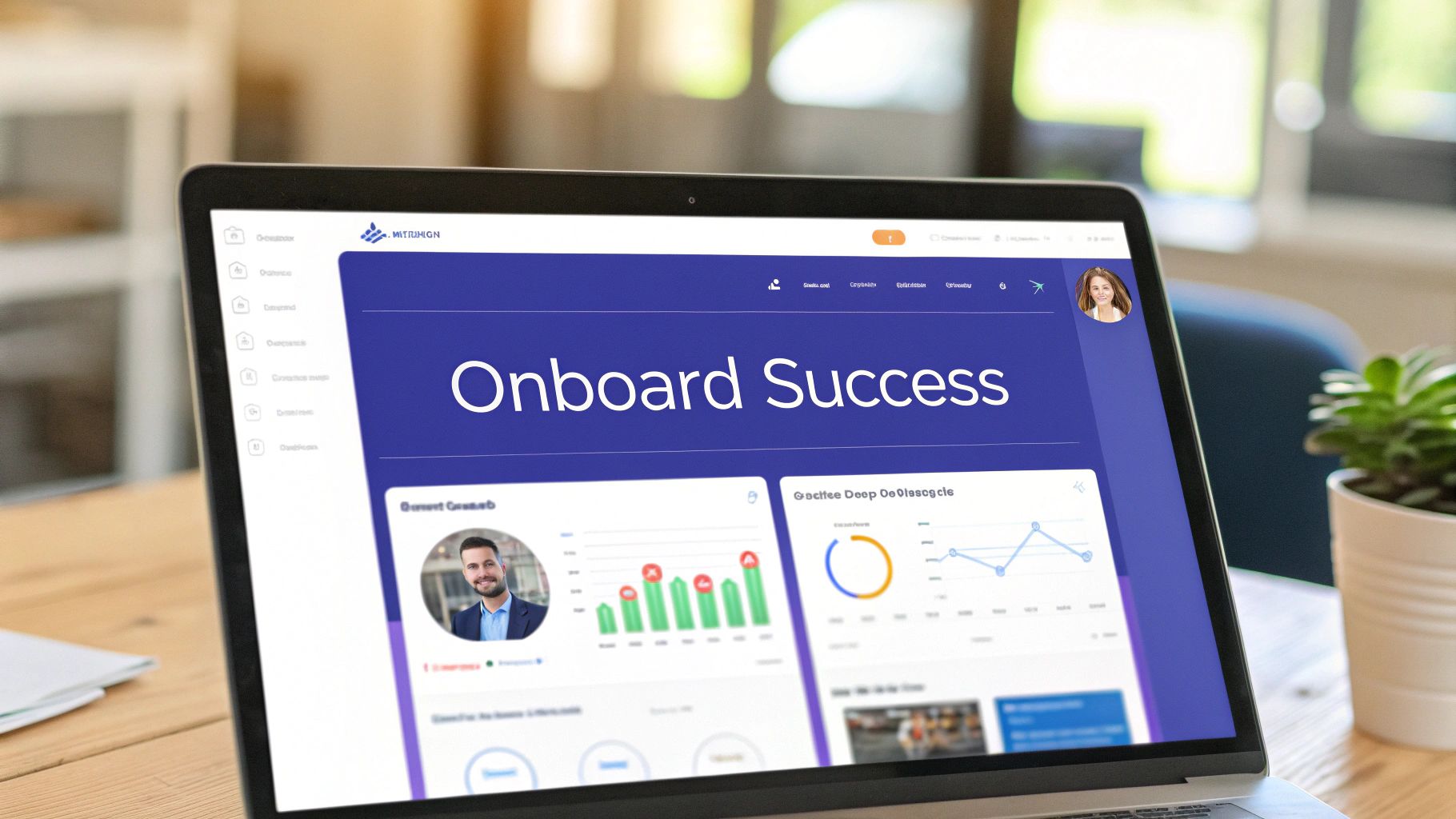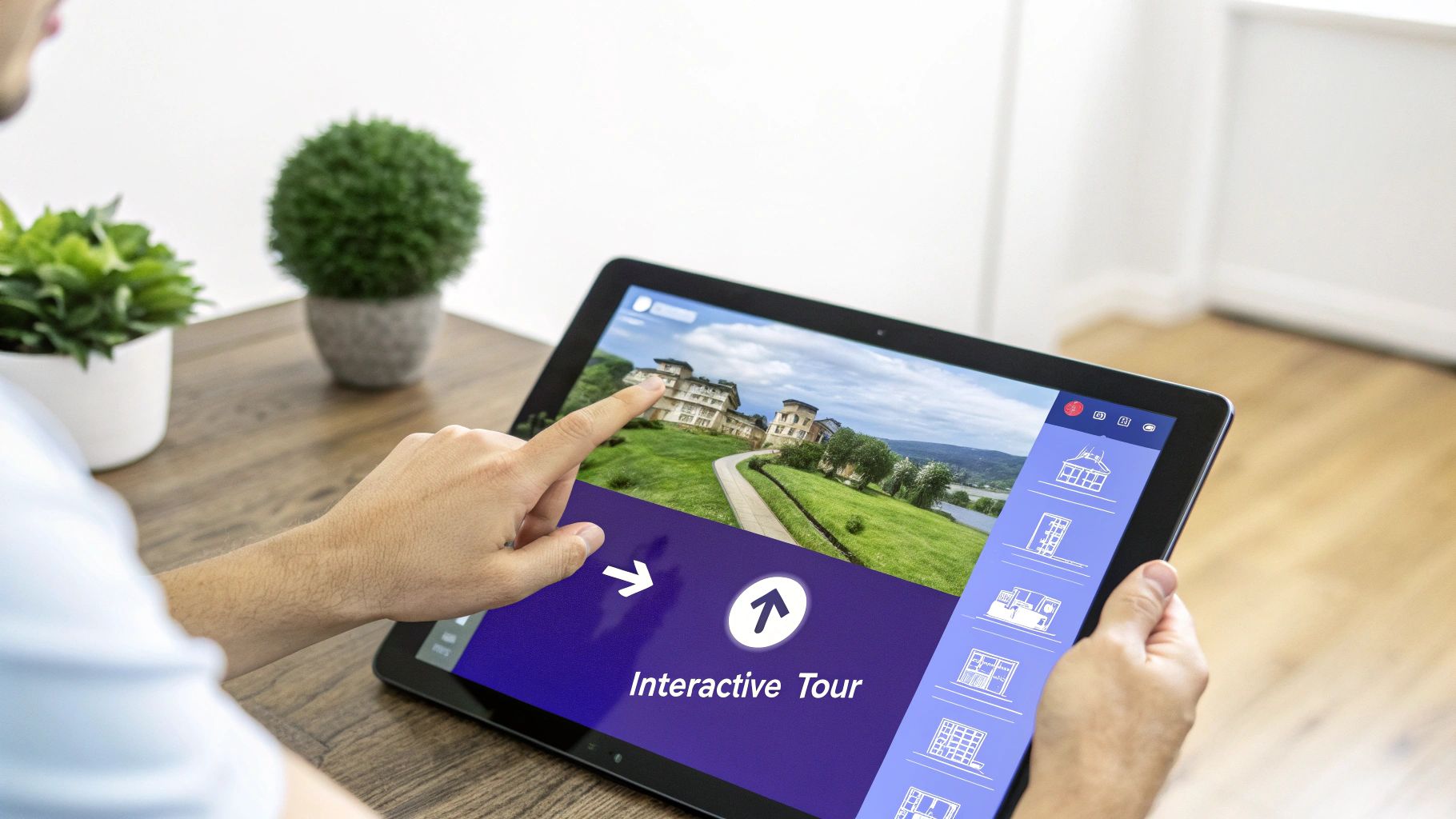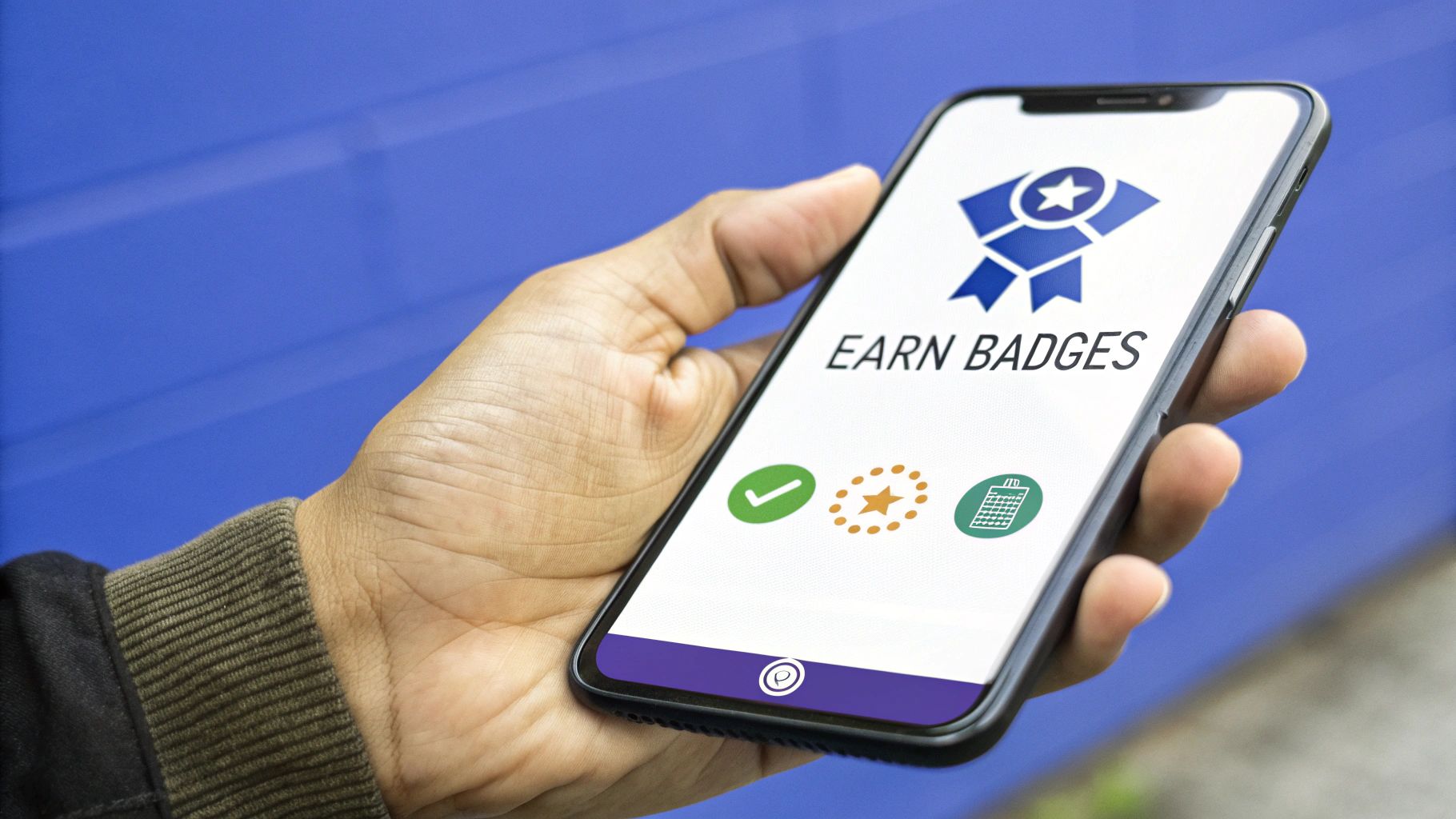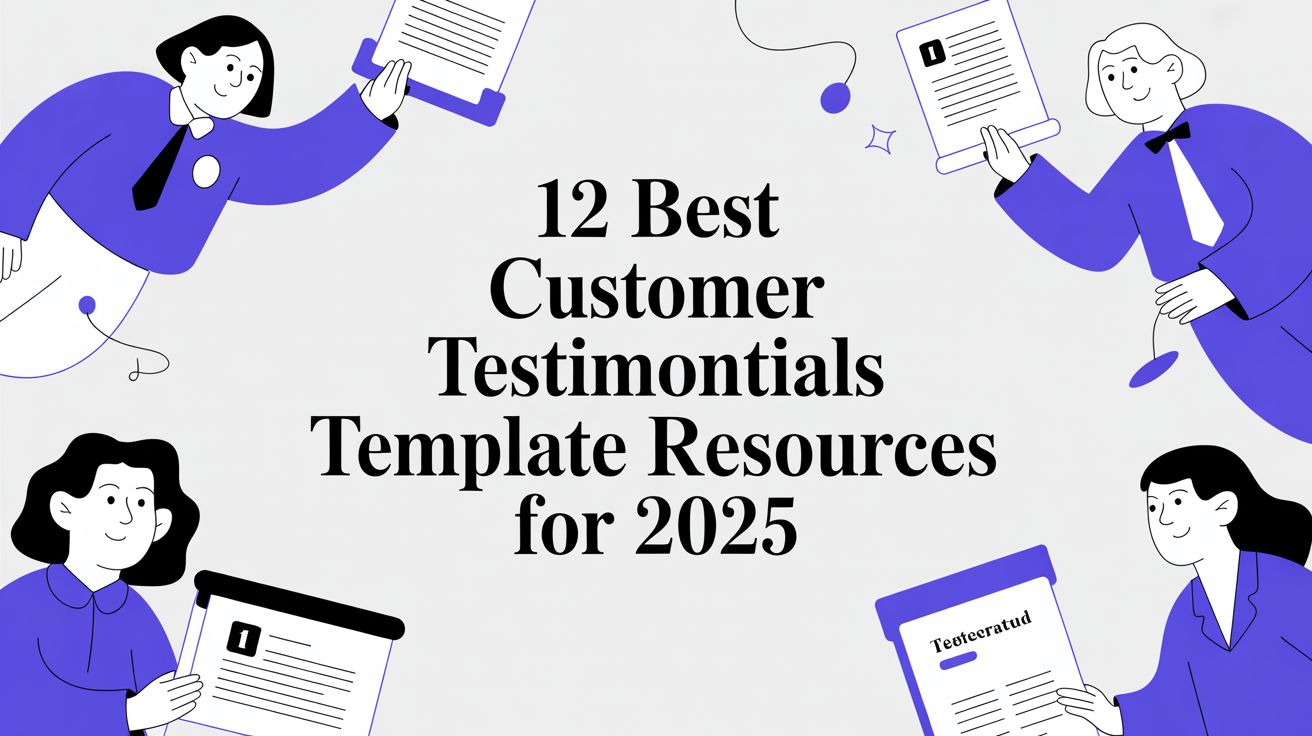10 Customer Onboarding Strategies to Boost Retention in 2025
Explore 10 proven customer onboarding strategies for SaaS. Learn to reduce churn and increase user retention with actionable tips and real-world examples.

Getting a new user is only half the battle. The real work begins the moment they sign up. A strong first experience is a key indicator of long-term success, directly impacting user activation, adoption, and retention. Many companies stumble here, presenting a busy interface or too many features at once, which can lead to early abandonment. A weak first impression often guarantees you will not get a second one.
This article moves past generic advice and provides ten specific, actionable customer onboarding strategies. We will look at how leading SaaS companies create welcome experiences that guide users to value quickly, building a foundation for a lasting customer relationship. You will get step-by-step tips and real-world examples for implementing methods like progressive onboarding, interactive product tours, and value-first messaging. Each strategy offers a different approach to solving the core challenge: making your product an indispensable part of your customer's workflow. Preparing a solid onboarding plan can be the difference between a one-time user and a lifetime advocate.
1. Progressive Onboarding
Progressive onboarding is a user-centric strategy that introduces your product's features and functionality gradually over time. Instead of showing everything at once, this method focuses on guiding new users to their first "aha moment" by revealing only the most important features first. More advanced capabilities are then unlocked or introduced as the user becomes more comfortable and engaged. This approach reduces initial cognitive load, making the product feel more intuitive and less intimidating.

This is one of the most effective customer onboarding strategies because it aligns with natural human learning patterns. Think of how Slack first focuses you on creating a channel and sending a message. Only later does it introduce threads, integrations, and huddles. This gradual revelation builds confidence and keeps users motivated, which directly combats early churn.
How to Implement Progressive Onboarding
- Identify Core Value: Pinpoint the single most important action a user must take to experience your product's core value. Make this the first step.
- Use Data Triggers: Analyze user behavior to determine the optimal time to introduce the next feature. For example, introduce advanced reporting tools only after a user has generated five reports using the basic version.
- Provide an Escape Hatch: Always give power users or those with more experience a way to skip introductory steps and access the full feature set immediately.
- Test and Iterate: A/B test different onboarding sequences to discover which path leads to the highest activation and retention rates for your specific audience.
This structured method helps you design an experience that feels personalized and manageable. For a deeper look into structuring these flows, you can explore customer onboarding best practices on Surva.ai.
2. Personalized Welcome Flows
Personalized welcome flows are a powerful strategy for making new users feel seen from their very first interaction. Instead of a one-size-fits-all introduction, this approach customizes the onboarding experience based on user characteristics, goals, or needs identified during sign-up or through early behavior. Users are segmented into different cohorts and receive specific content, feature highlights, and guidance that directly addresses their particular use case. This makes the product feel immediately relevant and valuable.
This is one of the most effective customer onboarding strategies because it shortcuts the path to user activation. When a new user logs in and sees a journey designed for their role, industry, or objective, it builds instant rapport and shows that your solution can solve their specific problems. For example, HubSpot modifies its onboarding based on a user’s stated marketing goals, while Spotify immediately uses your initial music choices to build personalized playlists, showing its value within minutes.
How to Implement Personalized Welcome Flows
- Start with Key Segments: Begin by identifying 2-3 primary user personas or job-to-be-done segments. Do not overcomplicate it initially; focus on the most distinct groups.
- Gather Data at Sign-Up: Use a brief but targeted sign-up questionnaire to ask about the user's role, team size, or primary goal. This data is the foundation for your personalization.
- Tailor the First Experience: Customize the initial product tour, welcome email sequence, and in-app messages for each segment. Show a project manager project templates, while showing a designer the branding customization tools.
- Allow for Self-Correction: Provide an easy way for users to change their preferences or update their goals within their profile settings, making sure the personalization remains accurate as their needs evolve.
3. Interactive Product Tours
Interactive product tours are guided, hands-on walkthroughs that let users explore and learn by doing. Instead of watching a passive video, new users click, type, and navigate through the actual product interface within a controlled, educational environment. This active participation creates a powerful "learn-by-doing" experience, building muscle memory and confidence from the very first session. The goal is to move users from theory to practice almost immediately.

This method is one of the most effective customer onboarding strategies because it accelerates the time-to-value. When a user successfully completes a core task, like creating their first board in Trello or setting up a base in Airtable, they experience a quick win. This contextual, hands-on guidance is far more memorable than reading documentation, leading to better feature adoption and a stronger initial connection to the product.
How to Implement Interactive Product Tours
- Focus on Key Actions: Keep the tour short and centered on 3-5 core features that deliver immediate value. Avoid overwhelming users with every single function.
- Use Relatable Data: Populate the tour with realistic example data. This helps users visualize how the product can work for their own specific needs and makes the experience more tangible.
- Provide Clear Exit Points: Allow users to exit the tour at any time and explore the product on their own. Forcing them to finish can create frustration.
- Celebrate Milestones: Incorporate small celebratory messages or visual cues when a user successfully completes a key step. This positive reinforcement encourages them to continue.
- Make Tours Re-Accessible: Allow users to restart the tour from a help menu or resource center. This gives them a way to refresh their memory later.
This approach transforms the initial learning curve into an engaging and productive first experience. Tools like Appcues and WalkMe specialize in helping companies build these tours without extensive coding.
4. Value-First Onboarding
Value-first onboarding is a strategy that focuses on delivering immediate, tangible results to new users, often before they even complete a full sign-up process. Instead of guiding users through a tour of features or a lengthy account setup, this approach identifies the shortest path to a meaningful outcome. The entire initial experience is engineered to help the user achieve that "quick win" as rapidly as possible.

This method is one of the most powerful customer onboarding strategies because it proves your product's worth instantly. Think of how Grammarly starts checking your text immediately on its website, or how Calendly allows you to set up your first scheduling page before finalizing your account. This immediate gratification shows value, builds trust, and strongly motivates users to invest more time in the product, significantly reducing initial friction and drop-off.
How to Implement Value-First Onboarding
- Map the Shortest Path to Value: Identify the single quickest action a user can take to experience your product's core promise. Design the initial user flow to facilitate this one action above all else.
- Use Progressive Registration: Delay asking for information. Let users interact with the core product and only ask for an email or password when it's necessary to save their work or unlock further functionality.
- Showcase Outcomes, Not Features: Frame the onboarding around the result the user will achieve. Instead of a button that says "Create a Form," use language like "Build Your First Survey in 60 Seconds."
- Measure Time-to-Value (TTV): Make TTV a primary key performance indicator (KPI). Continuously analyze and optimize your onboarding to shorten the time it takes for a new user to get a meaningful result.
By prioritizing immediate results, you give users a compelling reason to stick around. As Intercom's Des Traynor has championed, showing your value upfront is more persuasive than simply telling people about it.
5. Social Proof Integration
Social proof integration is a customer onboarding strategy that builds trust and validates a new user's decision by showcasing how other people are successfully using your product. It involves weaving testimonials, case studies, user statistics, and other forms of peer validation directly into the onboarding flow. This method taps into the psychological principle of social influence, where people look to others for guidance in uncertain situations, reducing hesitation and boosting confidence.
This approach is highly effective because it answers the new user's underlying question: "Are other people like me getting value from this?" Seeing evidence of success from peers or respected companies reassures them they have made the right choice. For example, Zoom often highlights its massive user count and displays logos of well-known companies during its signup process, while Shopify showcases examples of successful stores to inspire new merchants.
How to Implement Social Proof Integration
- Segment Your Proof: Match social proof to specific user segments. If a user signs up as a marketer, show them a testimonial from a CMO, not an engineer.
- Use Specific Metrics: Instead of vague praise, use testimonials with concrete outcomes. For instance, "This tool helped us increase our conversion rate by 15% in two months" is more powerful than "We love this tool."
- Place at Decision Points: Display social proof at critical moments where a user might hesitate, such as when they are asked to connect a data source, invite teammates, or upgrade their plan.
- Keep It Current: Regularly update your testimonials and case studies to make sure they remain relevant and credible. Outdated social proof can undermine trust rather than build it.
Using social proof helps you frame your product not just as a tool, but as a proven solution used by a thriving community. For guidance on getting powerful user stories, you can explore how to write testimonials on Surva.ai.
6. Gamification Elements
Gamification is a strategic approach that integrates game-design elements like progress bars, achievements, and points into the onboarding process. This method taps into powerful psychological drivers, such as the desire for completion and accomplishment, to make learning a new product more engaging and motivating. By turning onboarding steps into a series of rewarding challenges, you can guide users forward while making the experience genuinely enjoyable. This reduces the perception of onboarding as a chore and transforms it into an interactive game.
This is one of the most effective customer onboarding strategies because it boosts intrinsic motivation and provides immediate, positive feedback. Think of Duolingo's use of streak counters and XP points, which encourages daily use, or LinkedIn's profile completion bar, which nudges users to add more information. These elements make progress tangible and create a compelling reason for users to fully explore the platform, leading to deeper initial engagement and a stronger foundation for long-term retention.
How to Implement Gamification Elements
- Align with Business Goals: Make sure every game element, from badges to leaderboards, directly encourages actions that align with key activation metrics and long-term customer success.
- Celebrate Meaningful Milestones: Reward users for completing significant steps that deliver real value, not just for clicking random buttons. Celebrating the first project setup is more impactful than celebrating a login.
- Keep It Subtle: Gamification should improve the user experience, not dominate it. For B2B SaaS, subtle progress indicators often work better than overt point systems, which might feel unprofessional.
- Test with Your Audience: A/B test different gamification mechanics to see what resonates most with your specific user base. What works for a consumer app may not be effective for an enterprise tool.
This approach helps you create a sticky and memorable first impression. For more on the psychology of motivation in product design, Yu-kai Chou's work offers extensive insights.
7. Multi-Channel Onboarding
Multi-channel onboarding is a comprehensive strategy that coordinates user guidance across multiple communication platforms. Instead of limiting support to a single channel, this approach provides a cohesive experience through in-app guidance, email sequences, video content, and live support. It acknowledges that users have different learning preferences and meets them on the channels they already use, creating a seamless and supportive journey from the very beginning.

This is one of the most effective customer onboarding strategies because it reinforces key value propositions consistently. A user might see a new feature in an in-app tour, receive an email tip about it the next day, and then watch a short tutorial video later in the week. Companies like Notion and HubSpot excel at this by combining in-app tutorials with email courses and extensive video libraries to cater to all learning styles.
How to Implement Multi-Channel Onboarding
- Map the User Journey: Document every potential touchpoint a new user has with your brand, from the first sign-up confirmation email to their 30-day usage milestone.
- Ensure Message Consistency: The messaging, branding, and core value propositions must be identical across all channels to avoid confusion and build brand trust.
- Use Behavioral Triggers: Trigger communications on the most appropriate channel based on user actions. For instance, send an in-app prompt for an active user but an email for someone who has not logged in for three days.
- Track Cross-Channel Engagement: Analyze how users interact with different channels to identify which combinations are most effective at driving activation and long-term retention. This data helps you optimize your strategy.
This coordinated method builds a strong support network around the user, making them feel guided at every step. You can see how Monday.com applies these principles by connecting its in-app tours with targeted email tips and live webinars.
8. Human-Assisted Onboarding
Human-assisted onboarding blends the efficiency of automated systems with the personalized touch of human support. This strategy uses automated product tours and email sequences for common tasks but provides access to real people, like customer success managers or live chat agents, for complex issues or high-value interactions. It acknowledges that while technology can scale, human connection is often necessary for building trust and solving unique problems.
This hybrid model is one of the most effective customer onboarding strategies because it offers the best of both worlds. For instance, Segment provides hands-on implementation support for technical setups, while Intercom integrates automated messages with instant access to live chat representatives. This approach makes sure users feel supported without overwhelming your support team, leading to higher confidence and lower frustration.
How to Implement Human-Assisted Onboarding
- Segment Your Users: Reserve high-touch, human-led onboarding for high-value customers or enterprise clients who have complex needs. Use automated flows for your standard user base.
- Define Escalation Triggers: Identify points in the automated flow where users frequently drop off or show signs of confusion. Use these as triggers to proactively offer human assistance via chat or a scheduled call.
- Train Your Onboarding Team: Your support staff needs specific training not just on the product, but on common onboarding friction points and best practices for guiding new users to activation.
- Set Clear Expectations: Be transparent about when human support is available. Use chatbot auto-replies or status indicators to inform users about response times outside of business hours.
This balanced method provides a safety net that helps users succeed when automation isn't enough. For more ideas on structuring these interactions, you can discover more about customer onboarding best practices on Surva.ai.
9. Micro-Learning Approach
The micro-learning approach breaks down complex product education into small, digestible modules that users can consume in just a few minutes. This strategy respects the busy schedules and limited attention spans of modern users by delivering focused, actionable lessons. Instead of a long, single training session, learning is spread out over time, making it feel less overwhelming and more manageable. Users can complete a quick module and immediately apply what they've learned, building momentum and confidence.
This is a highly effective customer onboarding strategy because it mirrors how people naturally absorb new information. Think of Duolingo’s five-minute daily lessons or Headspace's short, guided meditations for beginners. Each session builds upon the last, reinforcing knowledge without causing fatigue. This method significantly improves knowledge retention and encourages consistent engagement with your product from day one.
How to Implement a Micro-Learning Approach
- Focus on a Single Concept: Design each micro-lesson around one specific task or feature. For example, a lesson could be solely about "How to create an invoice template" or "How to add a new team member."
- Use Varied Content Formats: Keep users engaged by mixing content types. Use short videos for demonstrations, interactive tooltips for in-app guidance, and concise text for quick reference.
- Create Clear Learning Paths: Connect your micro-modules in a logical sequence so users know what to learn next. This creates a clear path from basic functions to more advanced capabilities.
- Provide Self-Service Resources: Micro-learning is most effective when paired with a comprehensive support system. For users who want to learn independently, you can explore How To Create A Knowledge Base That Always Works to build a library of on-demand answers.
10. Empty State Onboarding
Empty state onboarding transforms blank screens from missed opportunities into powerful guidance tools. When a new user first logs in, they often face interfaces devoid of data, which can feel intimidating or confusing. This strategy fills these empty states with helpful content, sample data, and clear calls-to-action to guide users to their first meaningful actions and show the product's value from the very beginning.
This is one of the most practical customer onboarding strategies because it addresses the user at a critical moment of uncertainty. For example, when you create a new board in Trello, you aren't met with a blank void; instead, you see example lists like "To Do," "Doing," and "Done." This immediately shows you how the tool works and what to do next. Similarly, GitHub's empty repository screen provides clear, actionable commands for pushing your first commit. This proactive guidance prevents confusion and accelerates the user's journey to activation.
How to Implement Empty State Onboarding
- Provide Realistic Examples: Use placeholder content that mirrors what your target user would create. This helps them visualize how the product fits into their own workflow.
- Offer Multiple Starting Points: Not all users have the same goal. Provide a few different calls-to-action that cater to various primary use cases. For instance, a project management tool could suggest creating a task, importing a project, or inviting a teammate.
- Make Guidance Dismissible: Once a user adds their own content, the empty state guidance should disappear automatically. This keeps the interface clean and focused on their work.
- Use Visuals to Reduce Intimidation: Incorporate friendly illustrations or icons to make the empty screen feel more welcoming and less like an error. This small touch can significantly improve the initial user experience.
Customer Onboarding Strategies Comparison
Building Your Onboarding Flywheel
We have explored a variety of powerful customer onboarding strategies, each with a unique role in transforming new users into loyal advocates. From the slow reveal of progressive onboarding and the personalized touch of custom welcome flows to the engaging nature of interactive product tours and gamification, the common thread is a relentless focus on delivering value. Your goal is not just to show users how to use your product, but to help them achieve their first win as quickly and smoothly as possible.
Remember that these strategies are not mutually exclusive. The most effective onboarding systems often blend several approaches. A value-first onboarding path can be improved with micro-learning videos, while a multi-channel sequence can be supported by human-assisted check-ins. The key is to see these tactics as building blocks for a comprehensive system that guides users from initial sign-up to long-term success.
From Strategy to Execution: Your Next Steps
The journey to an optimized onboarding experience is continuous. Here are your actionable next steps to turn these ideas into a growth engine:
- Identify Your "Aha!" Moment: Before you change anything, pinpoint the single action or set of actions that makes a user realize your product's core value. Your entire onboarding flow should be engineered to guide every new user to this moment.
- Audit Your Current Flow: Put yourself in a new user's shoes. Go through your existing sign-up and onboarding process with a critical eye. Where is the friction? What questions are left unanswered? Where do users get stuck?
- Implement One Small Change: Don't try to overhaul everything at once. Select one strategy from this article, like improving your empty states or adding social proof to the welcome screen, and implement it. Measure the impact on activation rates and user feedback before moving on to the next improvement.
A System, Not a Project
Viewing customer onboarding as a one-time project is a mistake. Instead, treat it as a dynamic system, an onboarding flywheel that gains momentum with each improvement. As new users find value faster, they are more likely to stay, upgrade, and recommend your product to others. This creates a positive feedback loop that reduces churn and fuels sustainable growth.
The strategies outlined here provide the blueprint, but true mastery comes from listening to your users and iterating based on their feedback. For a comprehensive guide to refining your entire user journey, find proven customer onboarding best practices. By combining these principles with direct customer insights, you can build an onboarding experience that not only retains customers but also becomes a significant competitive advantage.
Ready to find out exactly where your users are getting stuck? Use Surva.ai to deploy targeted surveys during onboarding or within cancellation flows to gather the precise feedback you need. Start building a better onboarding experience today with Surva.ai.


